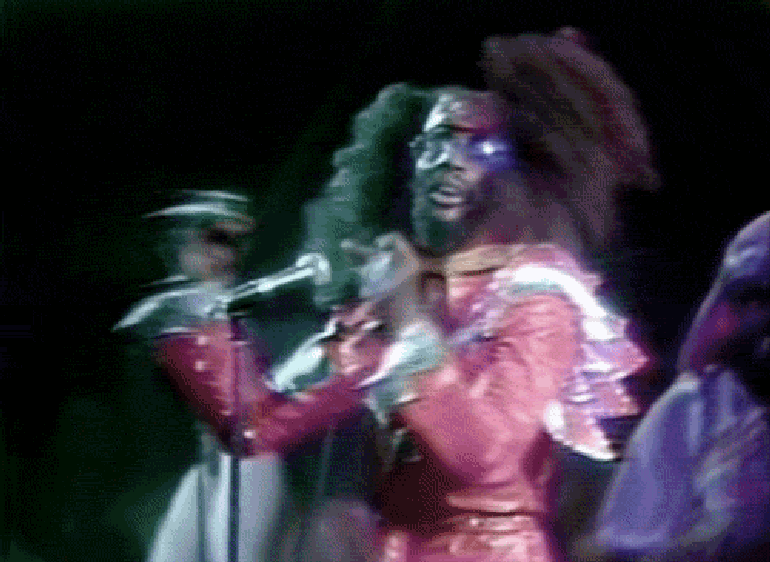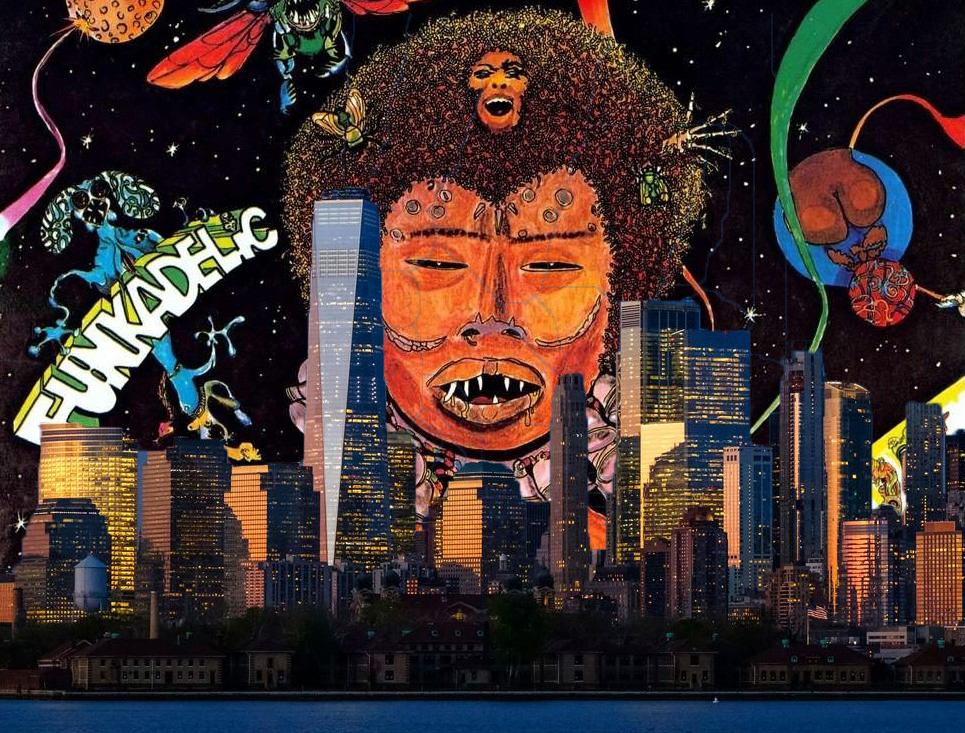SAMUEL HYLAND
“Around here, however, we don’t look backwards for very long,” Walt Disney Enterprises declared in a 20th Century marketing campaign. “We keep moving forward, opening up new doors and doing new things, because we’re curious . . . and curiosity keeps leading us down new paths.”
All human beings are hereditary artists – whether we like it or not – because all human beings are guaranteed to leave this planet having created something. Whether the offering be a memory, an idea, or a series of footprints, our collective existence is founded upon a cycle of conception that never really stops. Humans create smaller humans. Those smaller humans spend a good chunk of the next century fertilizing Earth with new doctrines (if not leeching off of the ones that already exist). Those humans grow up to create a batch of brand new smaller humans. The pattern continues.
And so, given our innate artistic nature, there is no surprise that we people often flock to new habitats, biomes, environments, in search of renewed creative energy. This is often practiced under the guise of ‘clearing one’s head.’ Whenever we find that our production has stalled, our minds (in primitive immediacy) instinctively search for the new element, because – revisiting 20th Century Walt Disney’s marketing campaign – we’re curious. And curiosity keeps leading us down new paths. We are inspired by seeing strangely structured Anglo-Saxon cathedrals; we are inspired by the otherworldly hipsters loitering daily over loosie cigarettes; we are inspired in walking past characters whom we have never encountered before and will never again encounter. Our lives are very much dictated by our moment-by-moment surroundings.

If the purgatory marked by mid-March to present day has bestowed anything upon us, it is the challenge to remain creative (human) though faced with mandatory barring of the aforementioned process. Alas, quite often, it is the first breath of fresh air beyond prison walls that reminds a convict of life’s many meanings.
New York City has epitomized that life for creators past and present. What has made Manhattan stand amongst few worldwide cultural epicenters for so long is, in part, the symbiotic relationship it upholds between living and nonliving art; man himself happily juxtaposed with what man has made. Much like the earlier-referenced human cycle of conception, NYC exists in incessant orbit: the art within it is omnipresent – amateur subway violinists, Washington Square poets, skateboard-toting teenagers – it feeds into a manifesto broadcast globally on a pop-culture level (ex: Uncut Gems [2019]), then with the gospel shared, parishioners from all over flock to the island in hopes of sucking up the magic while contributing that much more.
One of many things COVID-19 has made equal amongst us is a recalibration of daily life behind the screen. For most, the transition was in full effect by April. We may have set up impromptu office spaces within the confines of our bedroom walls, gotten comfortable enough to sport pajama pants beneath our computer cameras, or grown accustomed to full-on Zoom etiquette, naturally knowing which meetings to turn our screens on for and which ones not to. But what filled the void of literally being outside? For me, at the outset, the answer was television. I subconsciously found myself tuning in to programs that somehow portrayed the familiar environment from which I was removed: Law & Order SVU, Billy on the Street, and Friends were in constant rotation. Even if I wasn’t intently watching. Hearing brazen f-bombs over the chaotic background noise of drill-machine-fire-engine-pandemonium was, for once refreshing – because it was normal. And I hadn’t seen normal in a long time.
But inevitably, with weeks of it, the TV grew monotonous and ineffective, like when the placebo finally stops working on a dying patient. Since that point, the new cure has existed purely in memories – the most prominent of which came back to me when Parliament Funkadelic’s Good to Your Earhole was queued up on my daily Spotify shuffle.
The first time I heard Good to Your Earhole, I was walking to the Lexington Avenue-59th Street subway station after my first day interning with an art museum as part of a high-school program. It was sometime in July – the clouds were gray, slowly blackening, occasionally grumbling – but, we were in that perfect pocket of dense humidity that precedes heavy rainfall and feels more like an ethereal springtime. I had my headphones in, skipping through every open crevice I could find between the bodies surrounding me, the endgame being to reach Lexington before the thunderstorm came. My skipping eventually calibrated itself to the music. It was cautious. There was a great part of me that didn’t want my fellow commuters to recognize how much fun I was truly having – bearing the title of a New Yorker and committing the act of enjoying oneself felt almost sacrilegious.
Yet – somehow- before I could get halfway to Lexington, the rain fell. And with the rain, my inhibitions followed.
As I laid in bed sometime mid-May with my Spotify playlist serving its time-machine duties to an acute perfection, the mental image seared into my head was one of me – soaking wet short-sleeve button-down stuck to my body, khaki dress pants darkened and made heavy by rainwater – bopping my head uncontrollably past estranged stares, angry briefcase-carriers, and hordes of shuffling feet en route to Lexington Avenue.
In a way, we were all at one point existing in the same Lexington-avenue-bound universe. The traumatic amputation of lives we once knew loomed above us like black clouds threatening to wash normalcy away with thunder; we all unintentionally found ourselves immersed in this rat-race of who could be the most productive (though beneath it all, we carried disgruntlement in briefcases alongside us); there was the element of wanting to reach a destination, whether it be the next stimulus check, the end of the school year, or mere happiness, before the storm could sweep us under.
Perhaps most importantly, though, we learned to dance amidst the rainfall. Instagram live streams became raucous concert halls. The streets in front of our houses became means for otherwise-canceled celebratory gatherings. The rooftops of our apartment buildings became yoga studios and tennis courts.
Someday – however far in the future that may be – the clouds will part over New York City. Until that day comes, we will be just fine. Because around here, we don’t look backwards for very long.


